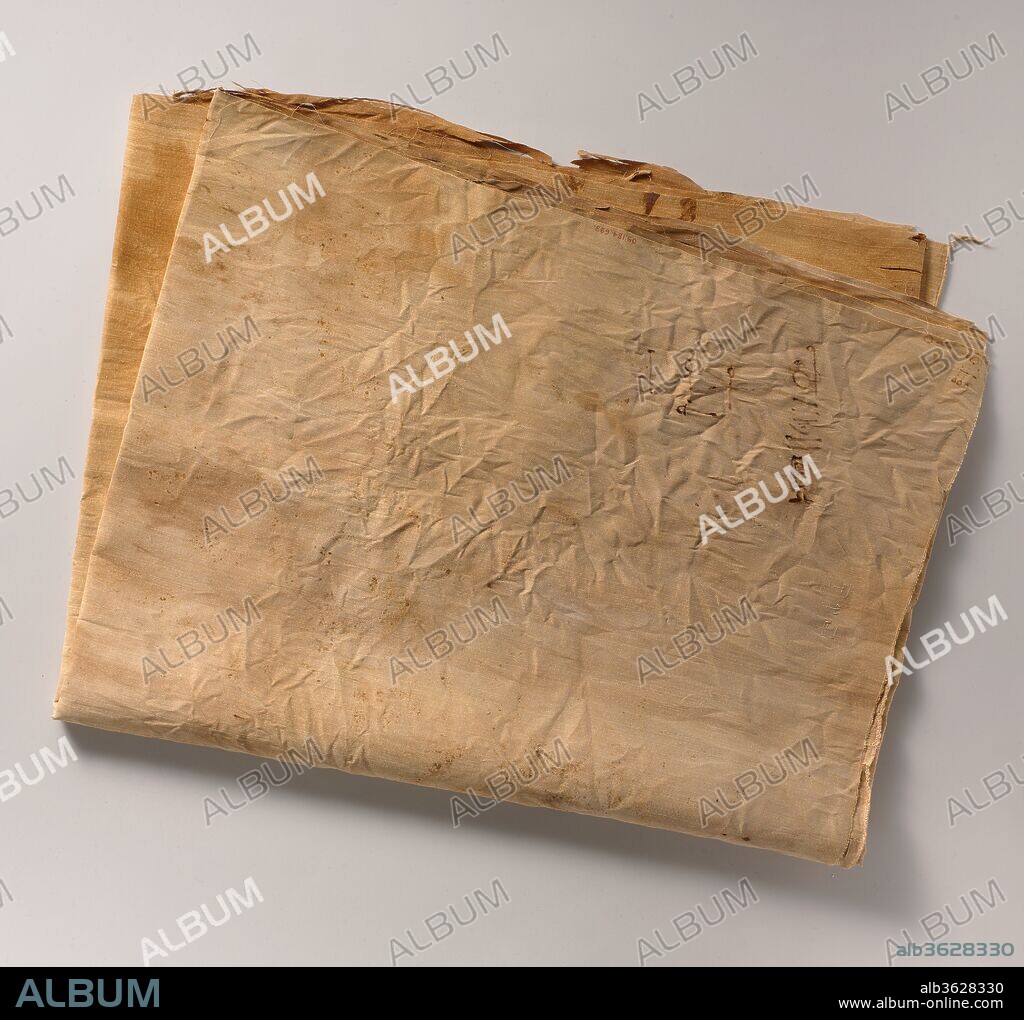alb3628330
Inscribed Linen Sheet from Tutankhamun's Embalming Cache

|
Ajouter à une autre Lightbox |
|
Ajouter à une autre Lightbox |



Avez-vous déjà un compte? S'identifier
Vous n'avez pas de compte ? S'inscrire
Acheter cette image.
Sélectionnez l'usage:

Titre:
Inscribed Linen Sheet from Tutankhamun's Embalming Cache
Légende:
Voir la traduction automatique
Inscribed Linen Sheet from Tutankhamun's Embalming Cache. Dimensions: L. 244 cm (96 1/16 in.); W. 61 cm. (24 in.). Dynasty: Dynasty 18. Reign: reign of Tutankhamun. Date: ca. 1336-1327 B.C..
In December 1907 Theodore M. Davis, a wealthy American who was funding excavations in the Valley of the Kings, discovered a small pit near the tomb of Seti I. Inside the pit were approximately a dozen large sealed whitewashed storage jars (09.184.1). Among other things, the jars contained bags of natron (a kind of salt), pieces of linen with hieratic inscriptions dated to Years 6 and 8 of a king named Tutankhamun (throne name Nebkheperure). At the time, almost nothing was know about Tutankhamun, and Davis declared that he had discovered the king's tomb.
Davis received a number of the jars and their contents in the division of finds and, in 1909, he gave most of his share to the Metropolitan Museum. It was only later that Herbert Winlock, the field director of the Museum's excavations at Thebes, realized that the natron and linen were embalming refuse from the mummification of Tutankhamun.
Two ink inscriptions on this length of cloth record a date of "year 8." One records Tutankhamun's throne name, Nebkheperure. The second records the date, the name of the god Amun-Re, and three nefer hieroglyphs (good, good, good), indicating that the cloth was of the finest quality. There is also a weavers mark that was woven into the fabric by its maker.
Technique/matériel:
linen
Période:
NEW KINGDOM
Musée:
Metropolitan Museum of Art, New York, USA
Crédit:
Album / Metropolitan Museum of Art, NY
Autorisations:
Modèle: Non - Propriété: Non
Questions sur les droits?
Questions sur les droits?
Taille de l'image:
4200 x 3965 px | 47.6 MB
Taille d'impression:
35.6 x 33.6 cm | 14.0 x 13.2 in (300 dpi)
 Pinterest
Pinterest Twitter
Twitter Facebook
Facebook Copier le lien
Copier le lien Email
Email
